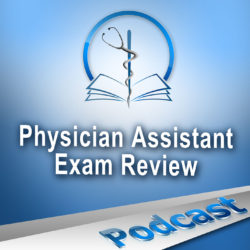143 Bladder disorders – How you’ll see them on your exam
Description
- Involuntary loss of urine due to dysfunction of bladder storage, outlet control, or both. Classified as stress, urge (overactive bladder), overflow, functional, or mixed types.
- Very common in women after menopause or childbirth. Overflow type occurs more often in men with benign prostatic hyperplasia or neurologic disease.
Clinical Presentation
Stress Incontinence: Leakage with increased intra-abdominal pressure (cough, sneeze, laugh); common postpartum or post-menopause.
The question stem would likely describe a postmenopausal woman who reports urine leakage when she exercises, laughs, or coughs.Urge Incontinence: Sudden, strong urge to void with inability to reach the toilet in time; caused by overactive detrusor muscle; nocturia is common.
The question stem would likely describe a patient who feels an abrupt urge to urinate and cannot make it to the bathroom in time, often awakening several times at night.Overflow Incontinence: Dribbling and incomplete emptying due to bladder outlet obstruction or detrusor underactivity; seen with benign prostatic hyperplasia, neurogenic bladder, or diabetes.
The question stem would likely describe an older man with benign prostatic hyperplasia who reports dribbling urine and a sensation of incomplete emptying.Functional Incontinence: Normal bladder function but impaired mobility or cognition (dementia, post-stroke).
The question stem would likely describe an elderly nursing home resident with dementia who is unable to reach the bathroom before urinating.Mixed Incontinence: Combination of stress and urge symptoms; common in older women.
The question stem would likely describe an older woman with both leakage when coughing and episodes of urgency.
Diagnostics
- Urinalysis and urine culture: First step to rule out urinary tract infection.
- Serum BUN and creatinine: Assess renal function in chronic or severe cases.
- Post-void residual measurement:
- Less than 50 mL is normal.
- Greater than 200 mL suggests overflow incontinence.
- In older adults, a residual up to about 100 mL can be normal.
- Bladder stress (cough) test: With a full bladder, immediate leakage after a single cough confirms stress incontinence.
- Voiding diary (48–72 hours) and medication review: Identify transient or medication-related causes (e.g., diuretics, anticholinergics, calcium-channel blockers, opioids, alpha-blockers).
- Urodynamic studies: A small catheter measures bladder pressure and urine flow during filling and emptying; used to identify detrusor overactivity, impaired contractility, or outlet obstruction when the diagnosis is uncertain or before surgery.
- Neurologic evaluation: Consider if diabetic neuropathy or spinal cord involvement is suspected.
Treatment
Step 1: Behavioral and Lifestyle Measures
- Bladder training: Scheduled voiding at gradually longer intervals to increase bladder capacity and reduce urgency episodes.
- Timed voiding and fluid management; limit caffeine, alcohol, and bladder irritants.
- Kegel (pelvic floor) exercises for stress incontinence.
- Weight loss and smoking cessation.
- Topical vaginal estrogen for postmenopausal atrophic urethritis or vaginitis contributing to symptoms.
Step 2: Pharmacologic Management (Type-Specific)
- Urge / Overactive bladder:
- Antimuscarinic agents (oxybutynin,






